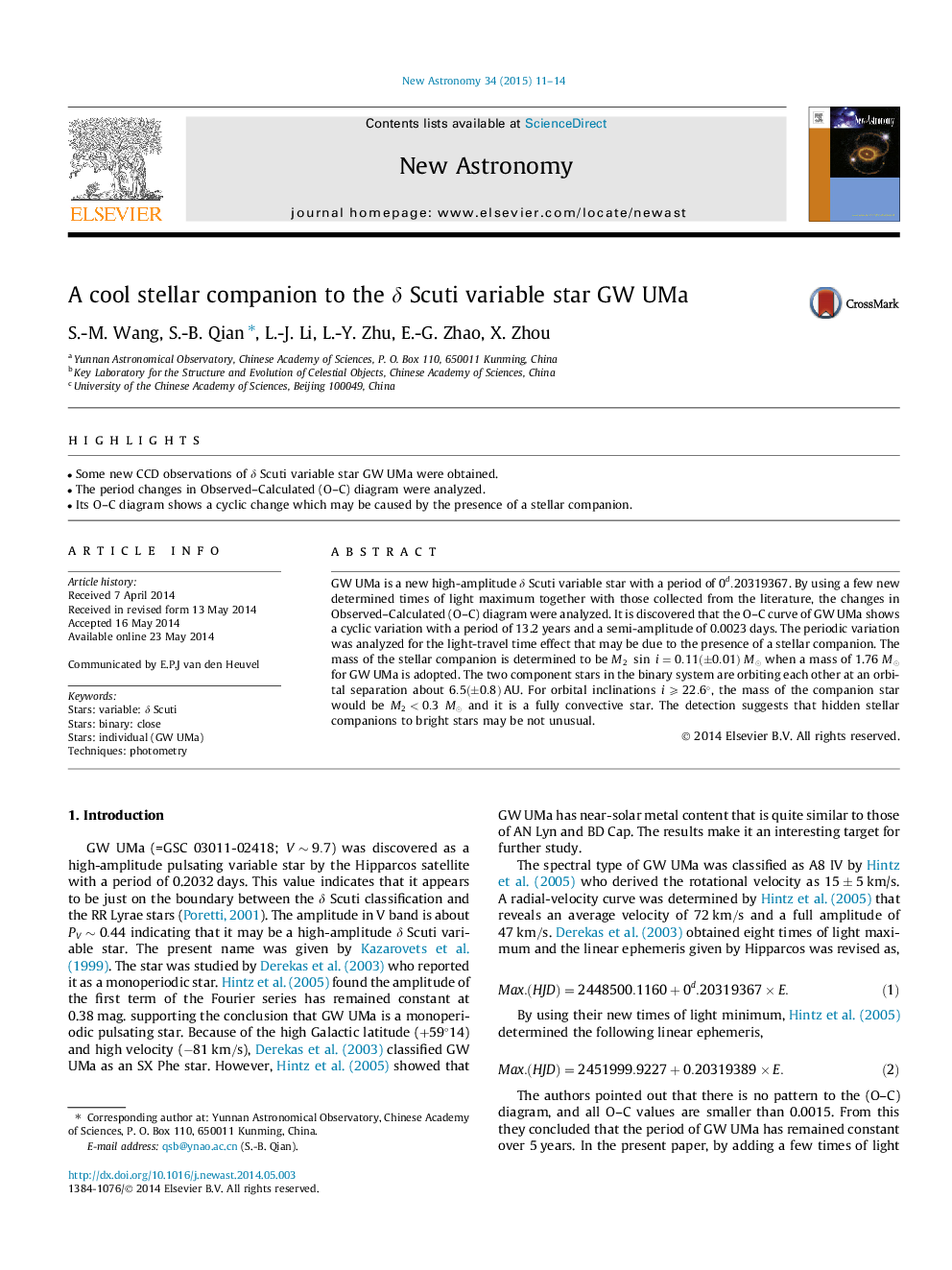| Article ID | Journal | Published Year | Pages | File Type |
|---|---|---|---|---|
| 1778953 | New Astronomy | 2015 | 4 Pages |
•Some new CCD observations of δδ Scuti variable star GW UMa were obtained.•The period changes in Observed–Calculated (O–C) diagram were analyzed.•Its O–C diagram shows a cyclic change which may be caused by the presence of a stellar companion.
GW UMa is a new high-amplitude δδ Scuti variable star with a period of 0d.203193670d.20319367. By using a few new determined times of light maximum together with those collected from the literature, the changes in Observed–Calculated (O–C) diagram were analyzed. It is discovered that the O–C curve of GW UMa shows a cyclic variation with a period of 13.2 years and a semi-amplitude of 0.0023 days. The periodic variation was analyzed for the light-travel time effect that may be due to the presence of a stellar companion. The mass of the stellar companion is determined to be M2sini=0.11(±0.01)M⊙M⊙ when a mass of 1.76 M⊙M⊙ for GW UMa is adopted. The two component stars in the binary system are orbiting each other at an orbital separation about 6.5(±0.8)6.5(±0.8) AU. For orbital inclinations i⩾22.6°i⩾22.6°, the mass of the companion star would be M2<0.3M2<0.3M⊙M⊙ and it is a fully convective star. The detection suggests that hidden stellar companions to bright stars may be not unusual.
